
Published: Dec 1, 2024
Top Scalability Options for Online Store Platforms in 2025
Top Scalability Options for Online Store Platforms in 2025
I’ve seen more online stores crash and burn than a rookie stunt pilot at an air show. But fear not! I’m here to make sure your e-commerce venture doesn’t go down in flames. Let’s dive into the world of scalable online store platforms and get your business ready for takeoff!
TLDR: What makes an e-commerce platform truly scalable?
1️⃣ What features should I look for in a scalable e-commerce platform?
A scalable e-commerce platform should offer robust infrastructure, flexible APIs, customizable features, and the ability to handle increased traffic and transactions without performance issues. Look for platforms with cloud hosting, load balancing capabilities, and easy integration with third-party tools.
2️⃣ How does scalability impact my online store’s growth?
Scalability directly affects your ability to grow. A scalable platform allows you to add products, expand to new markets, and handle traffic spikes without downtime or slow loading speeds. It ensures your store can keep up with increased demand, improving customer experience and boosting sales potential.
3️⃣ What are the cost implications of choosing a scalable e-commerce platform?
While scalable platforms might have higher upfront costs, they often prove more cost-effective in the long run. They reduce the need for frequent migrations or upgrades as your business grows, saving time and resources. Many offer pay-as-you-grow models, allowing you to scale your costs along with your business.
Table of Contents
- Understanding E-commerce Platform Scalability
- Top Scalable E-commerce Platforms
- Key Scalability Features to Look For
- Scaling Your Online Store: Best Practices
- Future Trends in E-commerce Scalability
- Common Scalability Challenges and Solutions
Understanding E-commerce Platform Scalability
When it comes to online stores, scalability is the secret sauce that can make or break your business. Let’s break it down in simple terms and explore why it’s so crucial for your e-commerce success.
What is E-commerce Platform Scalability?
Scalability in e-commerce means your online store can handle growth without breaking a sweat. It’s like having a rubber band that stretches as your business expands, rather than a rigid stick that snaps under pressure.
Key Aspects of Scalability:
- Traffic Handling
 Your site stays speedy even when hordes of shoppers flood in.
Your site stays speedy even when hordes of shoppers flood in. - Data Management
 Effortlessly manages growing product catalogs and customer info.
Effortlessly manages growing product catalogs and customer info. - Transaction Processing Smoothly handles more orders without hiccups.
- Feature Expansion
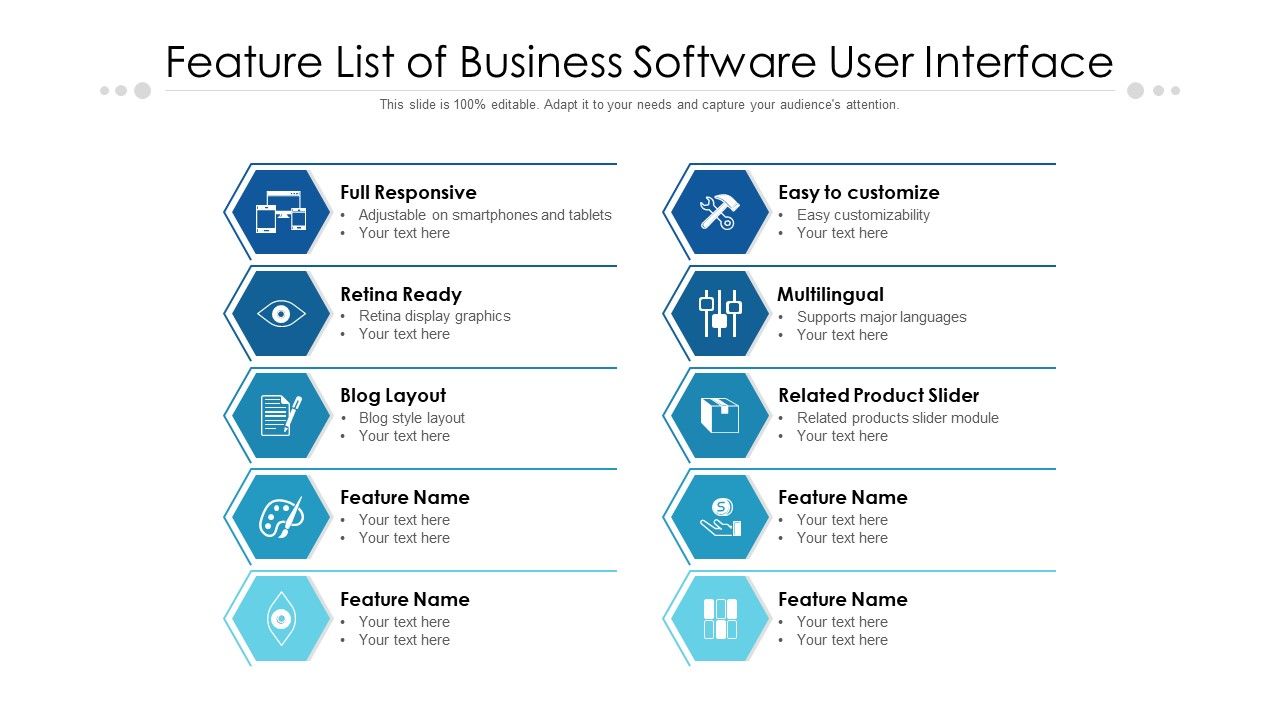 Easily adds new bells and whistles as your needs evolve.
Easily adds new bells and whistles as your needs evolve.
Why Scalability Matters for Your Online Store
Imagine this: You’re running a small online boutique selling handmade jewelry. Suddenly, a celebrity wears one of your pieces, and boom! Your site traffic explodes overnight. Without a scalable platform, your site might crash faster than you can say “viral sensation.”
Real-World Scalability Success: Allbirds
- Started as a small Kickstarter project in 2014
- Used Shopify Plus to scale rapidly
- Grew to a $1.4 billion valuation in just 5 years
Allbirds’ scalable platform allowed them to handle massive growth without missing a beat. Their site stayed lightning-fast even as orders poured in from around the globe.
The Cost of Poor Scalability
Not having a scalable e-commerce platform can hurt your business in more ways than one:
- Lost Sales: Slow loading times can drive customers away. A 1-second delay in page load time can lead to a 7% loss in conversions.
- Damaged Reputation: Site crashes and errors can make your brand look unprofessional.
- Missed Opportunities: Limited features can hold you back from expanding into new markets or trying new strategies.
Scalability Features to Look For
When choosing an e-commerce platform, keep an eye out for these scalability superpowers:
- Cloud Hosting
 Automatically adjusts server resources based on traffic.
Automatically adjusts server resources based on traffic. - Content Delivery Network (CDN) Spreads your content across global servers for faster loading.
- API Integration Lets you connect with other tools and services seamlessly.
- Microservices Architecture Allows for easier updates and feature additions.
Scalability in Action: Target’s E-commerce Transformation
Target’s online sales skyrocketed during the 2020 pandemic. How did they handle it?
- Moved to a microservices architecture
- Implemented cloud-based inventory management
- Upgraded their mobile app for smoother user experience
Result: 195% increase in digital sales in Q2 2020 without major hiccups.
The Bottom Line on Scalability
Choosing a scalable e-commerce platform isn’t just about handling more traffic or sales. It’s about future-proofing your business. It gives you the flexibility to pivot, experiment, and grow without constantly worrying about your tech holding you back.
Remember, in the fast-paced world of online retail, the ability to scale quickly and efficiently can be the difference between thriving and just surviving. So, when you’re picking your e-commerce platform, think big – your future self will thank you!
Top Scalable E-commerce Platforms
Let’s dive into the cream of the crop when it comes to scalable e-commerce platforms. I’ve put these bad boys through their paces, and trust me, they’re built to handle your wildest growth dreams.
Shopify Plus
Shopify Plus is like the Hulk of e-commerce platforms - it’s got serious muscle. Here’s why it’s a top pick:
- Unlimited bandwidth: Your store won’t break a sweat, even during massive sales spikes.
- Customization galore: Tweak till your heart’s content without touching code.
- Multi-channel selling: Spread your products across social media, marketplaces, and more.
Who’s crushing it with Shopify Plus?
- Gymshark From a garage startup to a billion-dollar fitness empire.
- Kylie Cosmetics Handled $420 million in sales in just 18 months.
Magento Commerce
Magento’s the Swiss Army knife of e-commerce. It’s flexible, powerful, and ready for anything:
- Open-source core: Customize till the cows come home.
- B2B features: Got wholesale dreams? Magento’s got your back.
- Global selling tools: Multi-language, multi-currency, no problem.
Magento success stories:
- HP
 Manages a complex product catalog across multiple countries.
Manages a complex product catalog across multiple countries. - Helly Hansen Boosted conversion rates by 170% after migration.
BigCommerce Enterprise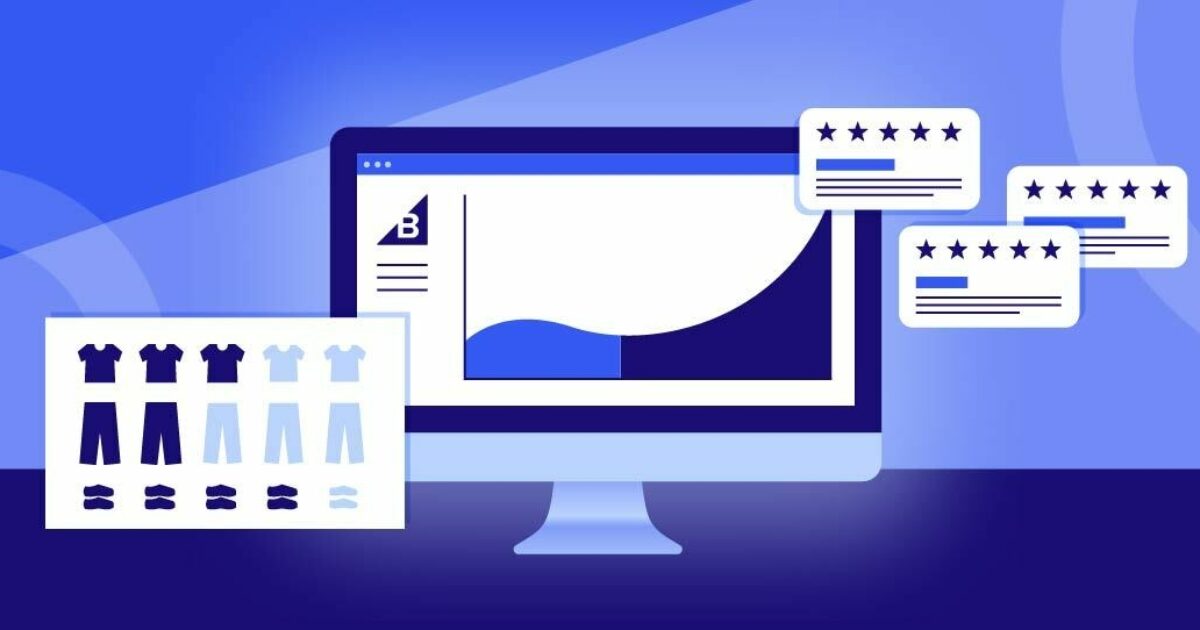
BigCommerce is like that overachieving friend who makes everything look easy:
- 99.99% uptime: Your store’s always open for business.
- Headless commerce: Front-end flexibility meets back-end stability.
- Built-in SEO tools: Climb those search rankings without breaking a sweat.
BigCommerce big wins:
- Skullcandy
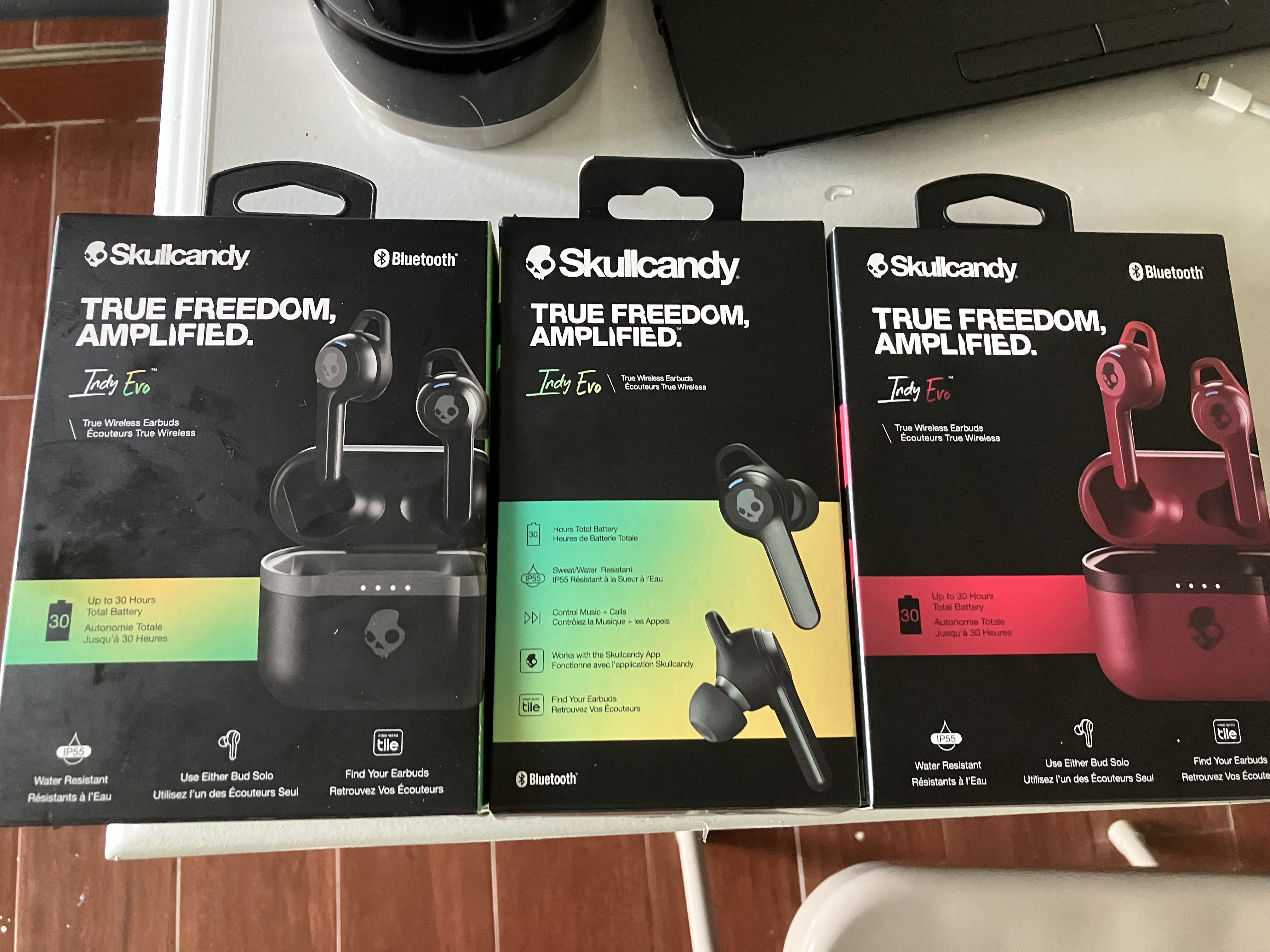 Saw a 76% increase in revenue after switching.
Saw a 76% increase in revenue after switching. - Camelbak Boosted mobile conversion rates by 25%.
WooCommerce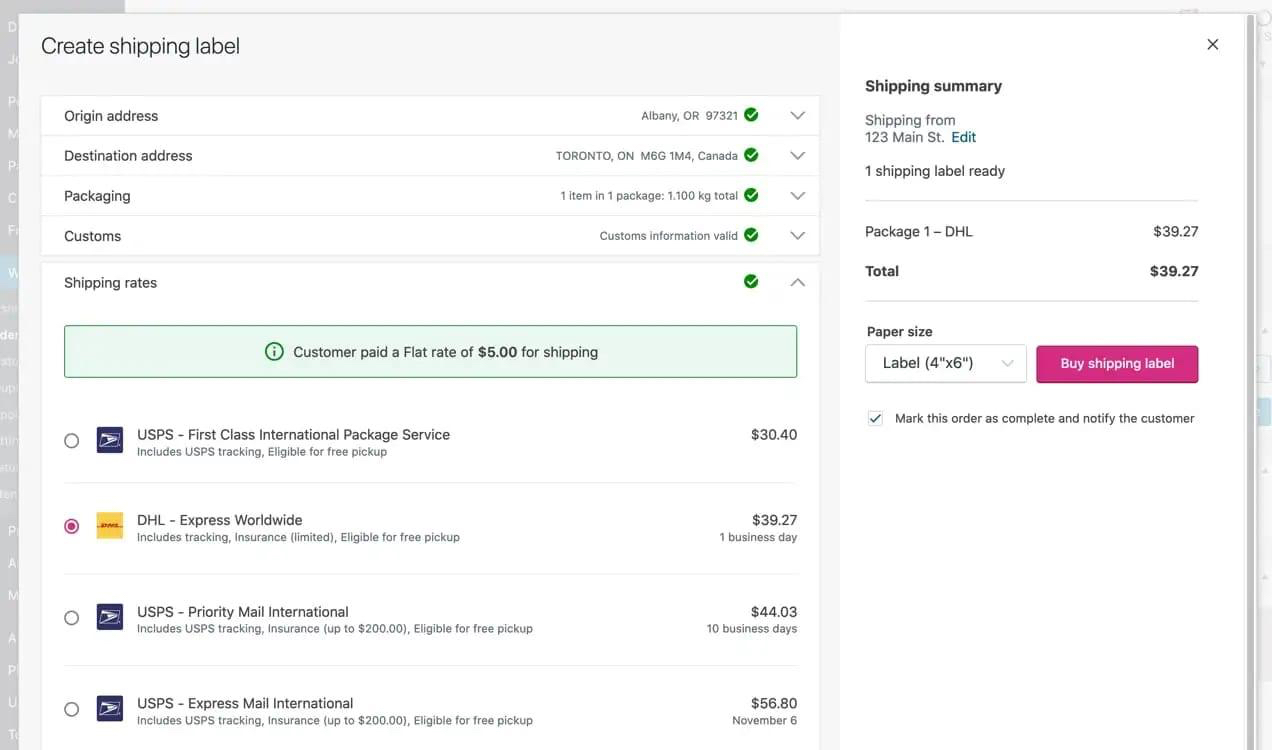
WooCommerce is the scrappy underdog that packs a serious punch:
- WordPress integration: Perfect if you’re already a WordPress wizard.
- Endless extensions: There’s a plugin for almost everything.
- Budget-friendly: Start small, scale big without breaking the bank.
WooCommerce winners:
- Porter & York
 Grew from $0 to $10 million in revenue.
Grew from $0 to $10 million in revenue. - Blue Star Coffee Roasters Saw a 300% increase in online sales during the pandemic.
Salesforce Commerce Cloud
Salesforce is the heavyweight champ of enterprise e-commerce:
- AI-powered personalization: Einstein AI helps you serve up the right products to the right people.
- Omnichannel mastery: Seamlessly connect online and offline experiences.
- Predictive intelligence: Forecast demand like a boss.
Salesforce success stories:
Remember, choosing the right platform is like picking the perfect pair of running shoes. What works for one business might not be the best fit for another. Consider your specific needs, growth plans, and budget when making your decision.
And hey, don’t be afraid to take these platforms for a test drive. Most offer free trials or demos, so you can kick the tires before committing. Happy scaling!
Key Scalability Features to Look For
When you’re shopping for an e-commerce platform that can grow with your business, there are some key features you’ll want to keep an eye out for. Let’s break them down:
Cloud Hosting and CDN
Cloud hosting is like having a rubber band for your website - it stretches to accommodate traffic spikes without breaking. Here’s why it’s crucial:
- Automatic resource scaling: Your site gets more server power when traffic surges
- Global reach: Content Delivery Networks (CDNs) serve your site from servers closest to your customers
- Improved uptime: Less chance of your site going down during busy periods
For example, when Shopify handled a 61% increase in sales during Black Friday 2020, their cloud infrastructure kept things running smoothly.
API Flexibility
Think of APIs as the Lego blocks of the digital world. They let you connect different services and tools to your e-commerce platform. Here’s why they matter:
- Easy integrations: Connect with everything from payment gateways to inventory management systems
- Custom functionality: Build unique features tailored to your business needs
- Future-proofing: As new tools emerge, you can easily add them to your setup
BigCommerce, for instance, offers over 400 API calls per second, allowing businesses like Skullcandy to create unique shopping experiences.
Customization Options
Your online store should be as unique as your brand. Look for platforms that offer:
- Flexible themes: Easily change your store’s look and feel
- Custom checkout processes: Tailor the buying journey to reduce cart abandonment
- Personalization tools: Offer unique experiences based on customer data
Magento is known for its extensive customization options, which is why brands like Coca-Cola use it for their online stores.
Multi-channel Capabilities
In today’s world, your products need to be everywhere your customers are. Look for:
- Social media integration: Sell directly on platforms like Instagram and Facebook
- Marketplace connections: List your products on Amazon, eBay, and others
- POS integration: Connect your physical and online stores seamlessly
Shopify Plus excels here, powering multi-channel sales for brands like Gymshark across social media, marketplaces, and their own website.
Automated Processes
As you grow, you’ll want your platform to take care of the small stuff automatically. Look for:
- Inventory management: Auto-updates across all sales channels
- Order processing: Automated fulfillment and shipping
- Customer segmentation: Auto-group customers for targeted marketing
Salesforce Commerce Cloud is a leader in automation, helping brands like Adidas manage complex, global operations efficiently.
Remember, the best platform for you depends on your specific needs and growth plans. Take the time to really dig into these features and how they align with your business goals. And don’t be shy about asking for demos or trials - nothing beats hands-on experience when you’re making such a crucial decision for your business’s future.
Scaling Your Online Store: Best Practices
Growing your online store isn’t just about picking the right platform. It’s about smart strategies and savvy moves. Let’s dive into some tried-and-true practices that’ll help you scale like a pro.
Optimize Your Site Performance
A slow site is a surefire way to lose customers. Here’s how to keep things zippy:
- Compress images using tools like TinyPNG
- Use a content delivery network (CDN) to serve files faster
- Minimize HTTP requests by combining files where possible
When ASOS shaved 1 second off their page load time, they saw a 10% increase in conversions. Speed matters!
Streamline Your Inventory Management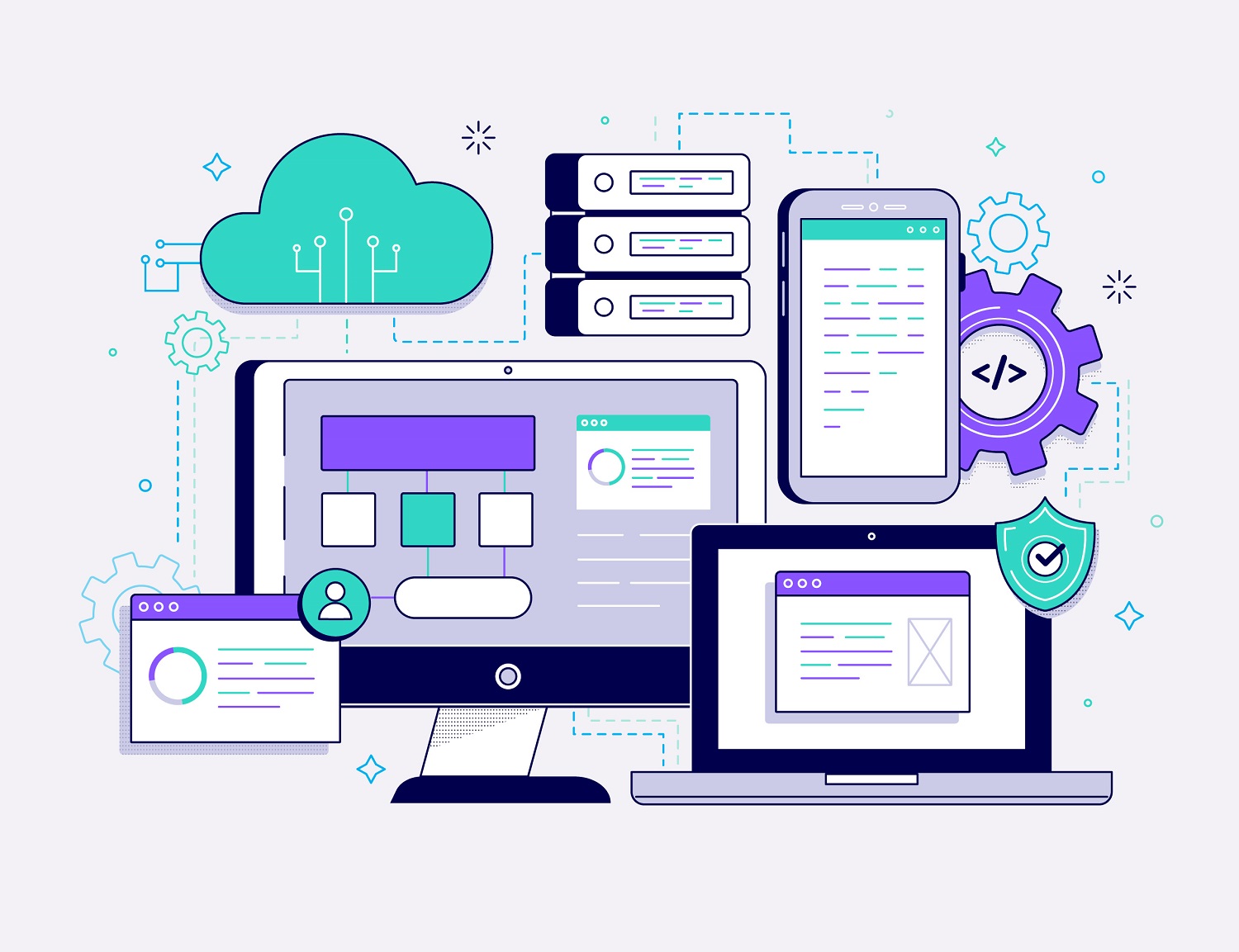
As you grow, keeping track of stock becomes crucial. Consider these tips:
- Use automated inventory software to track stock levels across channels
- Set up low stock alerts to avoid stockouts
- Implement just-in-time inventory to reduce storage costs
Warby Parker uses predictive analytics to forecast demand and optimize their inventory, reducing waste and improving customer satisfaction.
Scale Your Customer Service
Happy customers are repeat customers. Here’s how to keep up as you grow:
- Implement a chatbot for 24/7 basic support
- Use a ticketing system to manage customer queries efficiently
- Create a comprehensive FAQ to reduce support tickets
Zappos is famous for its stellar customer service, which has been key to their growth from startup to billion-dollar company.
Leverage Marketing Automation
Work smarter, not harder with your marketing efforts:
- Set up automated email flows for welcome series, abandoned carts, and post-purchase
- Use social media scheduling tools to maintain a consistent presence
- Implement retargeting ads to bring back interested shoppers
Dollar Shave Club grew to over 3 million subscribers largely through clever automated marketing campaigns.
Implement Data-Driven Decision Making
Let the numbers guide your growth:
- Use analytics tools to track key metrics like conversion rate and average order value
- A/B test everything from product descriptions to checkout processes
- Analyze customer feedback to identify areas for improvement
Amazon is the king of data-driven decisions, using customer data to personalize recommendations and optimize their site continuously.
Expand Your Product Range Strategically
Growing your catalog can boost sales, but do it smart:
- Use customer data to identify gaps in your current offerings
- Start with complementary products to existing bestsellers
- Consider dropshipping to test new product lines without heavy inventory investment
Casper started with just one mattress and gradually expanded their product line based on customer feedback and sleep data.
Optimize for Mobile
With more people shopping on their phones, mobile optimization is non-negotiable:
- Ensure your site is responsive across all devices
- Simplify your mobile checkout process
- Consider developing a mobile app for loyal customers
Etsy saw a 30% increase in conversion rates after optimizing their mobile site.
Remember, scaling isn’t a one-size-fits-all process. What works for one store might not work for another. The key is to stay flexible, keep testing, and always keep your customers’ needs at the forefront. Happy scaling!
Future Trends in E-commerce Scalability
The e-commerce world never stands still, and the future of scalability is looking pretty exciting. Let’s peek into the crystal ball and see what’s coming down the pike for online stores looking to grow big and fast.
Artificial Intelligence (AI) and Machine Learning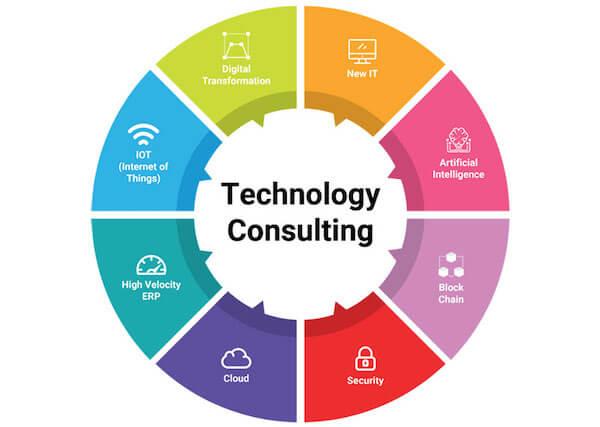
AI isn’t just a buzzword anymore – it’s becoming a must-have for scalable e-commerce:
- Personalized shopping experiences: AI analyzes customer behavior to offer tailored product recommendations. Amazon attributes 35% of its revenue to its recommendation engine.
- Chatbots on steroids: Advanced AI assistants handle complex customer queries, freeing up human agents for high-value interactions.
- Predictive inventory management: Machine learning algorithms forecast demand with scary accuracy, helping prevent stockouts and overstock situations.
Headless Commerce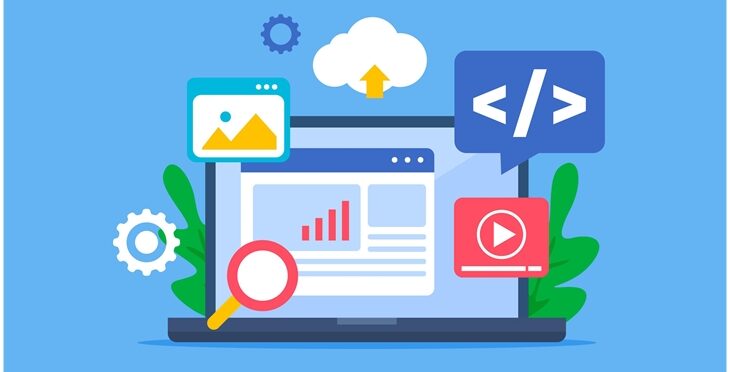
Headless commerce is like giving your online store a brain transplant:
- Flexibility: Separates the front-end from the back-end, allowing for rapid changes and updates.
- Omnichannel presence: Easily push content and products to any platform or device.
- Improved performance: Faster load times and smoother user experiences.
Nike embraced headless commerce to create a seamless experience across their website, mobile app, and in-store displays.
Progressive Web Apps (PWAs)
PWAs are like the Swiss Army knife of mobile commerce:
- Offline functionality: Customers can browse your store even without an internet connection.
- App-like experience: Offers the best of both web and mobile apps.
- Improved performance: Faster load times and smoother navigation.
Alibaba saw a 76% increase in conversions across browsers after launching their PWA.
Voice Commerce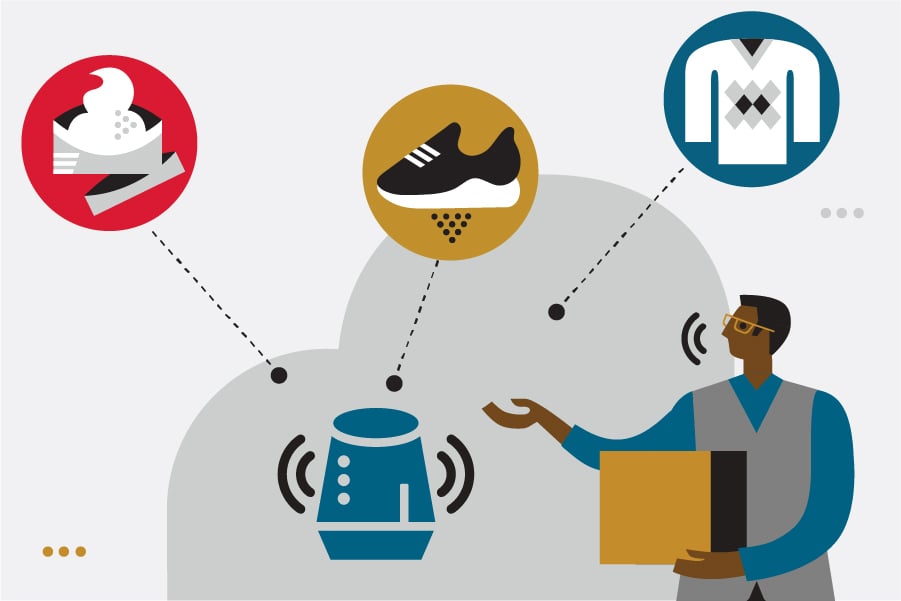
“Alexa, buy more toilet paper” is just the beginning:
- Voice-activated shopping: Integration with smart speakers for hands-free ordering.
- Voice search optimization: Tailoring product descriptions for voice queries.
- Voice-based navigation: Allowing customers to browse and shop using voice commands.
Walmart partnered with Google to offer voice-based grocery shopping, aiming to simplify the reordering process.
Augmented Reality (AR) Shopping
Try before you buy, without leaving your couch:
- Virtual try-ons: For clothing, makeup, and accessories.
- Product visualization: Place furniture in your room before purchasing.
- Interactive user manuals: AR-powered guides for product assembly and use.
IKEA Place app lets customers visualize furniture in their homes, reducing returns and increasing customer satisfaction.
Blockchain for Supply Chain Management
Blockchain isn’t just for crypto enthusiasts anymore:
- Transparency: Track products from manufacturer to consumer.
- Authenticity verification: Combat counterfeit products in luxury markets.
- Smart contracts: Automate payments and order fulfillment.
Walmart uses blockchain to track food safety in its supply chain, reducing contamination risks and improving recall efficiency.
5G and Edge Computing
Faster connections and localized processing power:
- Real-time personalization: Instantly customize user experiences based on behavior.
- Enhanced mobile shopping: Smoother, faster experiences on smartphones.
- IoT integration: Connect with smart devices for automated reordering.
Verizon and Amazon are partnering to bring 5G edge computing to AWS, promising faster, more responsive applications.
The future of e-commerce scalability is all about creating faster, smarter, and more personalized shopping experiences. By keeping an eye on these trends and adopting them strategically, you’ll be well-positioned to grow your online store and stay ahead of the competition. Remember, the key is to balance innovation with what works best for your specific business and customers. Happy scaling!
Common Scalability Challenges and Solutions
Scaling an online store isn’t always smooth sailing. Let’s dive into some common hurdles you might face and how to overcome them like a pro.
Site Speed and Performance Issues
As your traffic grows, your site might start to slow down. Here’s how to keep things zippy:
- Implement caching: Use tools like Redis or Memcached to store frequently accessed data.
- Optimize images: Compress images and use lazy loading to speed up page load times.
- Upgrade hosting: Consider moving to a more robust hosting solution or a Content Delivery Network (CDN).
Wayfair improved their site speed by 20% by optimizing images and implementing a CDN, leading to a significant boost in conversions.
Inventory Management Complexities
Keeping track of stock across multiple channels can be a nightmare. Here’s how to stay on top of it:
- Use an integrated inventory system: Implement software that syncs inventory across all sales channels in real-time.
- Set up automated reordering: Use par levels to trigger automatic restock orders.
- Implement demand forecasting: Use historical data and AI to predict future inventory needs.
Zara uses RFID technology and predictive analytics to manage inventory across 2,000+ stores and their e-commerce platform, reducing stockouts and overstock situations.
Order Fulfillment Bottlenecks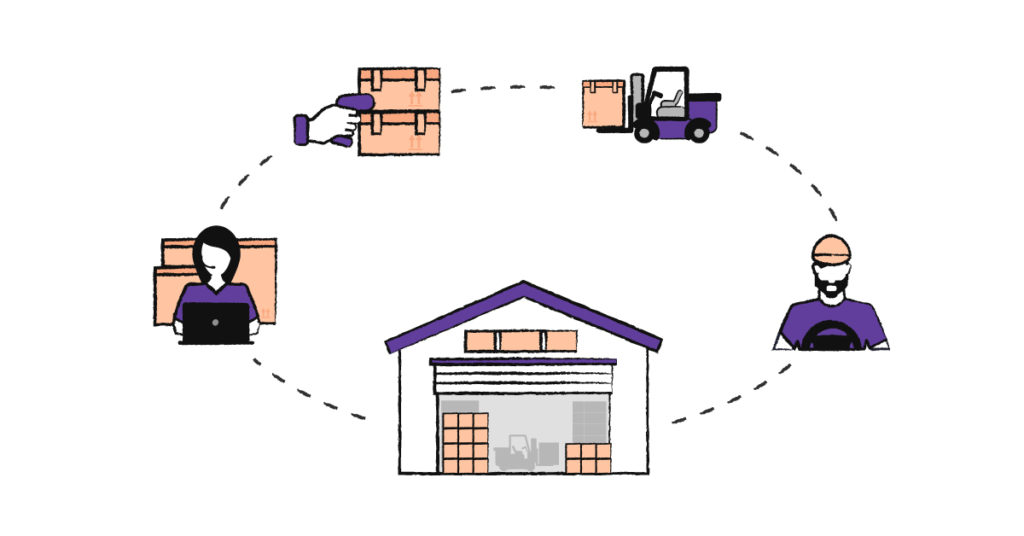
As orders increase, your fulfillment process might struggle to keep up. Try these solutions:
- Automate where possible: Use software to automatically route orders to the nearest fulfillment center.
- Consider 3PL partnerships: Third-party logistics providers can handle storage, packing, and shipping as you scale.
- Implement a distributed inventory model: Store inventory across multiple locations to reduce shipping times and costs.
Amazon revolutionized e-commerce fulfillment with their Fulfillment by Amazon (FBA) service, allowing businesses to leverage their vast logistics network.
Customer Support Scaling
More customers often mean more support tickets. Here’s how to scale your support efficiently:
- Implement a knowledge base: Create a comprehensive FAQ to reduce simple support requests.
- Use chatbots for initial triage: AI-powered chatbots can handle basic queries and route complex issues to human agents.
- Leverage community forums: Encourage customers to help each other and share tips.
Airbnb scaled their customer support by implementing a robust knowledge base and community forum, reducing support tickets by 40%.
Payment Processing Challenges
As you expand globally, payment processing can become complex. Here’s how to handle it:
- Offer multiple payment options: Include local payment methods for international markets.
- Use a robust payment gateway: Choose a provider that can handle high transaction volumes and multiple currencies.
- Implement fraud detection: Use AI-powered tools to spot and prevent fraudulent transactions.
Stripe helps businesses like Shopify process payments at scale, handling everything from local payment methods to fraud prevention.
Data Management and Analysis
With growth comes more data. Here’s how to turn that data into actionable insights:
- Implement a robust analytics platform: Use tools like Google Analytics or Mixpanel to track key metrics.
- Centralize your data: Use a data warehouse to combine data from multiple sources for comprehensive analysis.
- Leverage machine learning: Use AI to uncover patterns and predict trends in your data.
Netflix uses big data analytics to personalize content recommendations, leading to a reported $1 billion per year in value from customer retention.
Technical Debt
Rapid growth can lead to quick fixes that cause problems later. Here’s how to manage technical debt:
- Regular code reviews: Schedule time to review and refactor code regularly.
- Microservices architecture: Break down your monolithic application into smaller, manageable services.
- Continuous integration/continuous deployment (CI/CD) Implement automated testing and deployment to catch issues early.
Etsy managed their technical debt by moving to a microservices architecture, allowing them to scale individual components of their platform independently.
Remember, scaling challenges are a sign of success - it means your business is growing! By anticipating these issues and implementing solutions proactively, you’ll be well-prepared to handle whatever growth comes your way. Keep learning, stay flexible, and don’t be afraid to ask for help when you need it. Happy scaling!
